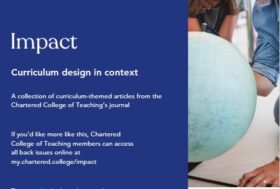Peer feedback during distance learning

Context
The British International School in the Netherlands. The school is a private, non-profit organisation serving the international community, with 450 pupils on roll. Most of our families have most of the school fees paid for by their employers; a small percentage of our families meet that fee cost independently. A significant majority of our pupils speak more than one language at home; in my class, the significant majority are advanced bilingual learners, with one pupil receiving additional EAL support.
Challenge
While all pupils had access to the technology that enabled daily contact with school, the majority come from families where both parents were working full time from home. It was consequently incumbent upon us to provide the routines and content to ensure that pupils continued to make good progress independently within the remote curriculum. Our focus on oracy skills in order to provide excellent peer-to-peer feedback opportunities was an element of in-school provision that we wanted to maintain during remote teaching and learning. In this way, parents could rest assured that teachers were continuing to deliver quality outcomes and experiences for their children.
Innovation
Peer feedback is a powerful tool by which pupils become more aware of their own performance through evaluating that of their peers. In writing, particularly, our pupils value the feedback they receive from their classmates for a variety of reasons: the efforts we put into devising success criteria collaboratively; the consistent focus on authorial intent and awareness of the audience; and enabling pupils to orally evaluate writing against the success criteria articulately, relevantly and concisely. As a year group, we felt it was vital to continue to provide opportunities for pupils to hear from one another as well as their teachers, in order to ensure progress in writing. We were fortunate that, with the organisational support of our SLT, we were able to check in three times a day with each child, as part of a group of nine or ten: two one-hour sessions of curricular input and one half-hour pastoral session. Our writing lessons followed a standard format: the first half-hour would focus on teacher and peer feedback, with the second focusing on direct instructionA method of instruction in which concepts or skills are taught using explicit teaching techniques, such as demonstrations or lectures, and are practised until fully understood by each student.
Pupils would then independently write, incorporating both the instructional content and specific feedback, submitting it in time for the teacher to format and present to the group in the next day’s session. While this structure was perhaps more rigid than that which we had in place in the classroom, we found the routine to be of benefit to the children who were mostly working at home without significant adult support. We were also able to see specific taught points (such as the use of multi-clause sentences to convey detailed setting descriptions in narrative writing) occurring more frequently and effectively in children’s writing. Pupil voice supported this approach: “I knew I was doing well because my classmates had good feedback for my work. I knew that I could also improve when my classmates gave feedback”, reported one pupil. However, despite these provisions, children still felt a sense of isolation, as evidenced in this pupil’s remarks: “We got to work on Teams so we could give each other feedback but we could not really do partner work.”
Going forward
I am even more acutely aware of the impact of “think, pair, share”; indeed, this was an element keenly missed by the children. Proactive pupils circumnavigated this issue by taking matters into their own hands: “I was able to call my friends if we were doing the same subject so that we could work through the questions and problems together. This helped me because I was able to hear what other people had to say so it built a greater understanding of the subject.” I am now interested in exploring more deeply the opportunities presented by breakout rooms in online communication platforms to recreate the oracy conditions of the live classroom.
Key recommendations
- Quickly establish a strong remote learning timetable and associated routines
- Spend the time before sessions establishing key vocabulary and expectations with any second adults so the children are consistently exposed to high-quality modelled feedback
- Explore how breakout rooms might be used safely and effectively to promote spontaneous and focused paired discussion around the learning objectives.
Richard Taylor is Year 6 teacher at The British International School, Netherlands.








